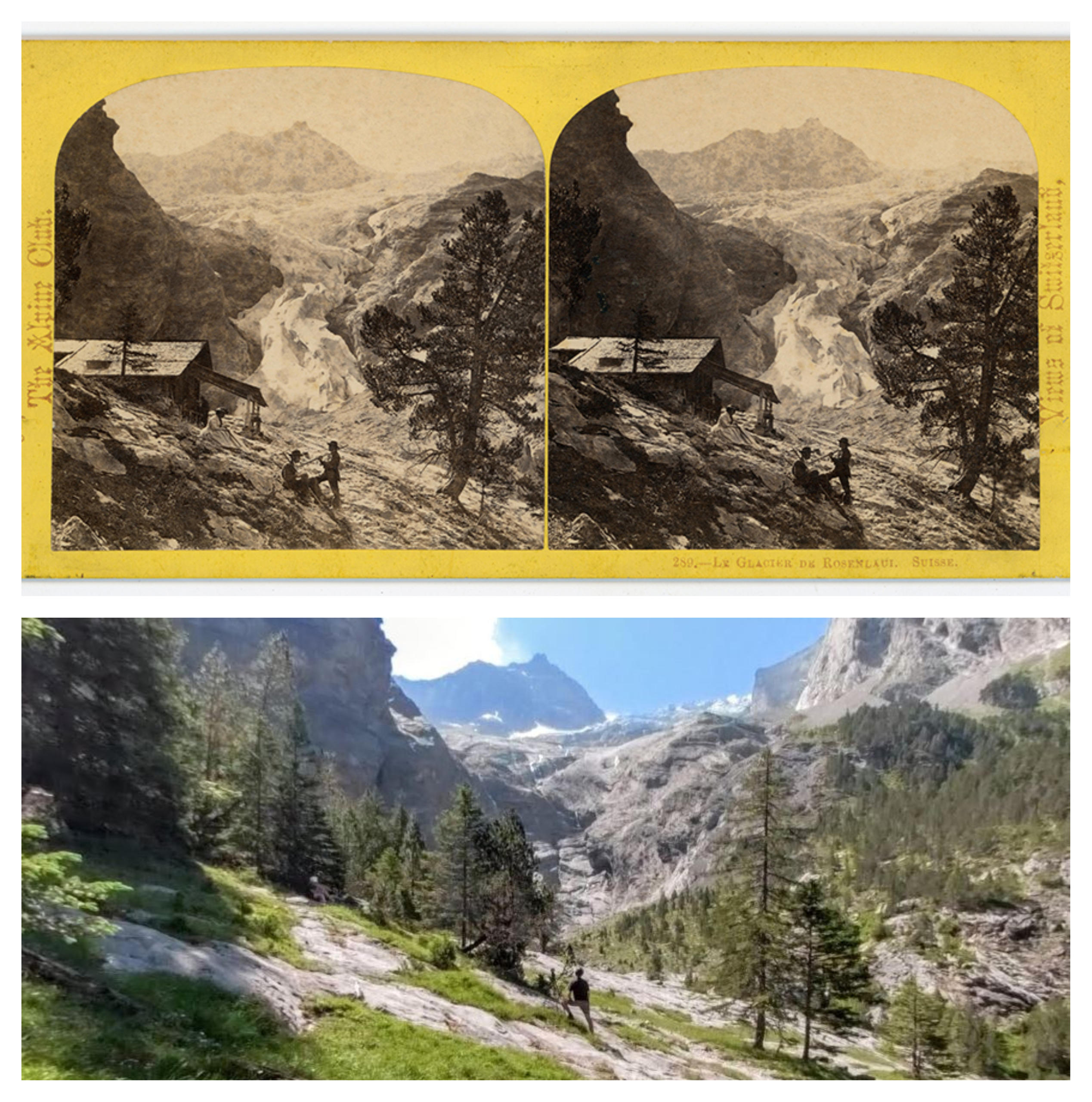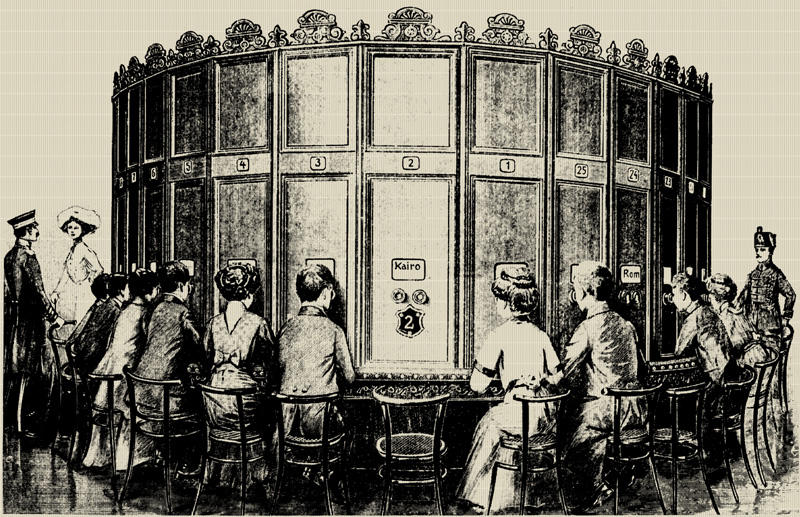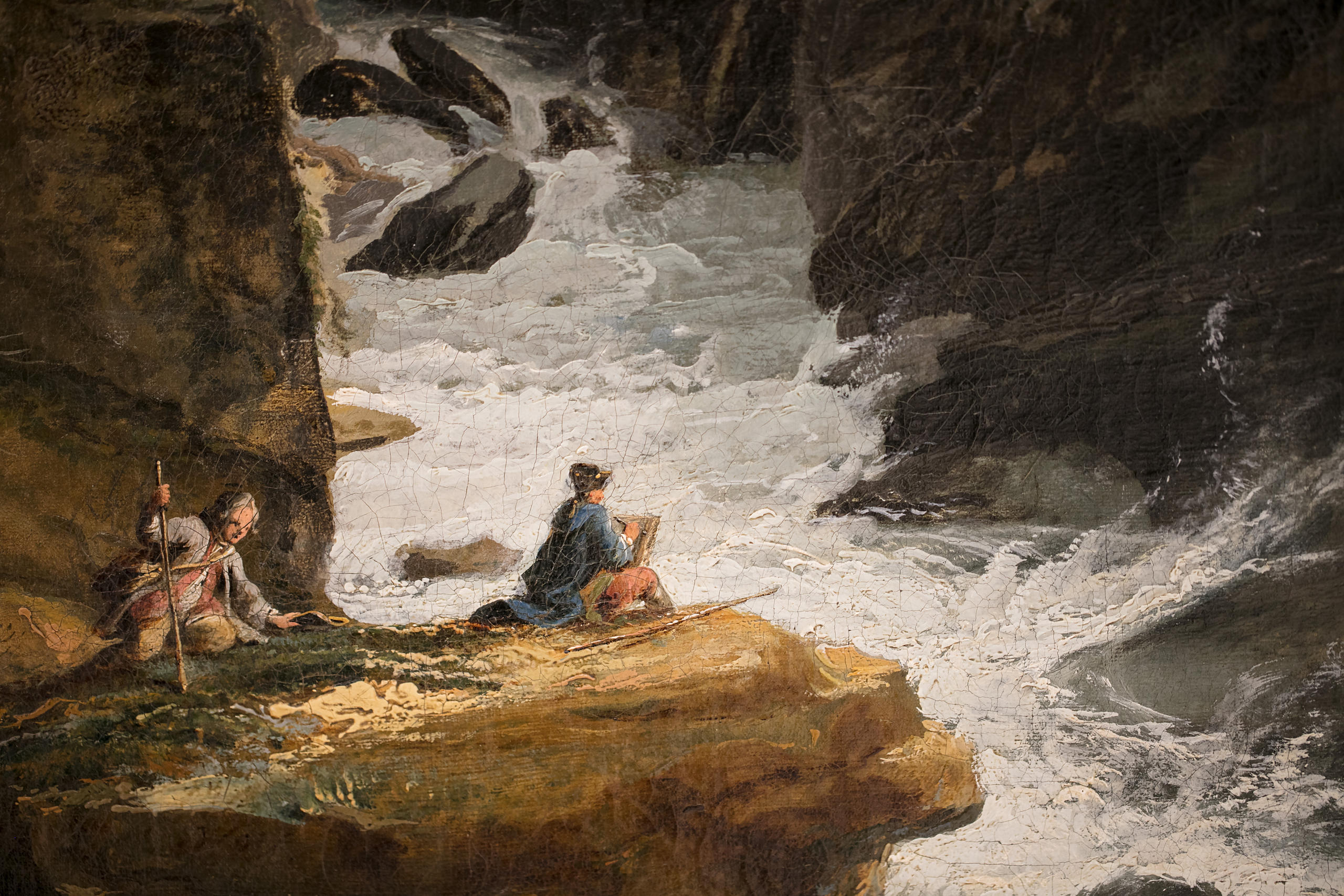
What iconic Swiss spots looked like 150 years ago
1863: the dawn of mass tourism in Switzerland. British photographer William England comes on a working visit. Using an innovative photographic technique, he captures the marvels of the Alpine landscape, the cities and towns, and the people. His pictures are a resounding success with the public at home.
2019: the boom of the digital era. Ticino artist Alan Alpenfelt decides to follow in England’s footsteps. Using innovative tools for audiovisual recording, he creates an art project which shows how much Switzerland has changed in 156 years.
It was the British who opened the door to tourism in Switzerland. At the turn of the 18th and 19th centuries came the scholars and poets, then the first intrepid mountaineers who climbed just for the fun of conquering the Alpine peaks – a hobby which must have seemed madness to the natives. The Alpine Club, the first association of these mountain-climbers, was founded in London in 1857.
Well-to-do circles in Britain soon became aware of the therapeutic value of high mountain air, fresh water from Alpine streams, milk whey and hot springs. In 1858, Thomas Cook led the first tour group across the continent of Europe. Switzerland was, of course, on the itinerary.
The development of road and rail, which made the Alps accessible to a wide public, did the rest. Switzerland became a major tourist destination.
Forgotten giant
Yet there can be no tourism abroad without marketing at home. Today we would most likely go online to explore the beauty of faraway places. The prosperous classes of Victorian Britain, however, came to rely on photographs.
In particular, around the middle of the 19th century, there was a craze for stereoscopic photography. This involved placing two slightly different views of a scene side by side. When viewed through a pair of special lenses, this gave the illusion of seeing one picture, but with the added dimension of depth.
This is where William England comes in. He specialised in this innovative technology, which he himself had a share in developing. Today, historians regard England as a forgotten giant of 19th-century photography. In his own time, his work enjoyed considerable success and made him one of the key participants in the London Stereoscopic CompanyExternal link.
Marketing ploy
In 1863, travelling with his wife and several assistants, William England took a series of photographs in Switzerland, France, Italy and the Kingdom of Savoy. These landscape pictures, among his most famous, were labelled “under the special patronage of the Alpine Club”, which was just a marketing ploy to boost sales. The Alpine Club actually knew nothing about this – when it found out, it made England change the wording to “by permission, dedicated to the Alpine Club”.
With or without such advertising ploys, England’s photographs were a major commercial success and they contributed to creating that idyllic view of Switzerland in the popular imagination, which is used by tourism marketers to this day.
But how has Switzerland changed in 156 years? To answer this question, Ticino artist Alan Alpenfelt followed in the footsteps of William England to try to find the particular locations where the British pioneer took his photographs.

“The ability to understand and deal with the long-term implications of human activity for the environment is an increasingly urgent issue. Following our history through sound and image is a useful way to raise awareness of the delicate balance between economic growth and sustainability,” says the site of Alpenfelt’s project, “Binaural Views of Switzerland”, sponsored by Pro Helvetia, the Oertli Foundation and the Swiss Foundation for radio and culture.

Audiovisual project
Alpenfelt took to the road and, always using public transport, reached about 30 of the locations visited by England. Not only did he see changes, he heard them too. We easily forget the sound dimension – how the modern world is full of all sorts of noise when compared to the world of 150 years ago.
With these considerations in mind, Alpenfelt decided to develop his project in several different ways.
The first was the construction of a “Kaiser panorama” to be inaugurated in November at the Academy of Architecture in Mendrisio. Visitors will be able to look at the stereoscopic photographs of William England, at the same time listening to “binaural” sound (a method of 360-degree audio recording) captured in 2019 at the places seen in the pictures. The sound dimension focuses awareness on a reality that we usually prefer to ignore, consciously or unconsciously.
The “trailers” made for the project are another good way to see how much the landscape has changed – or not.
Alpenfelt’s experience of following England’s footsteps is being made into a radio documentary which will contain many sound impressions and also interviews with experts in the fields of photography and tourism promotion.
The pictorial record of Alpenfelt’s journey is already publicly availableExternal link. Stereoscopic photography as practised by William England can be regarded as the ancestor of today’s 360-degree photography. The 360-degree photographs made by Alan Alpenfelt in the places visited by the British photographer 156 years ago can now be seen in Google Street View. Enjoy!
View of the Wetterhorn, Grindelwald, Canton Bern (July 2019)

More
Swiss Alps painter gets his own museum
(Translated from Italian by Terence MacNamee)

In compliance with the JTI standards
More: SWI swissinfo.ch certified by the Journalism Trust Initiative





























You can find an overview of ongoing debates with our journalists here . Please join us!
If you want to start a conversation about a topic raised in this article or want to report factual errors, email us at english@swissinfo.ch.